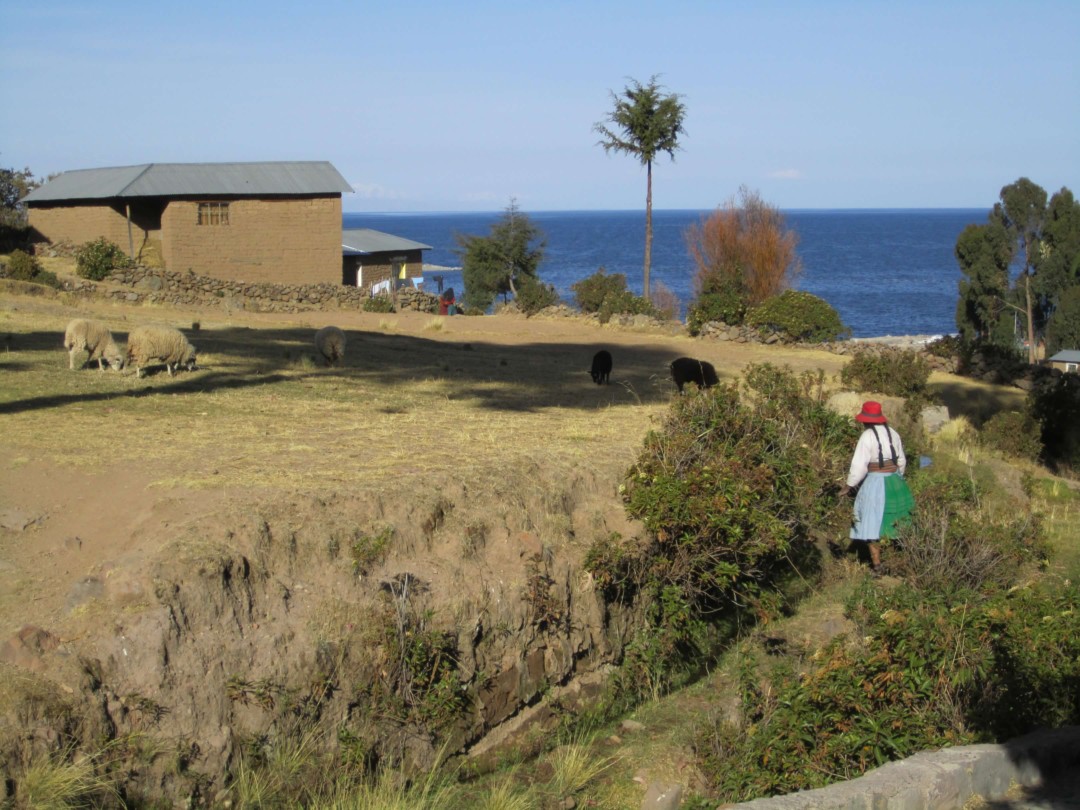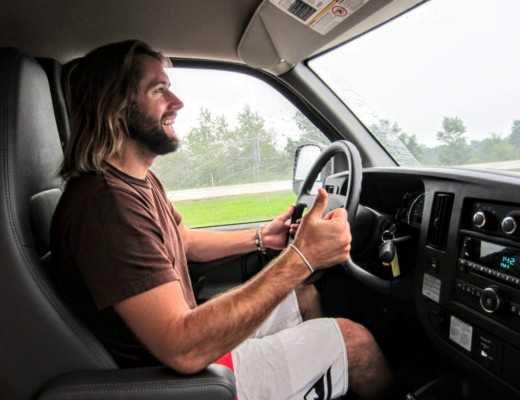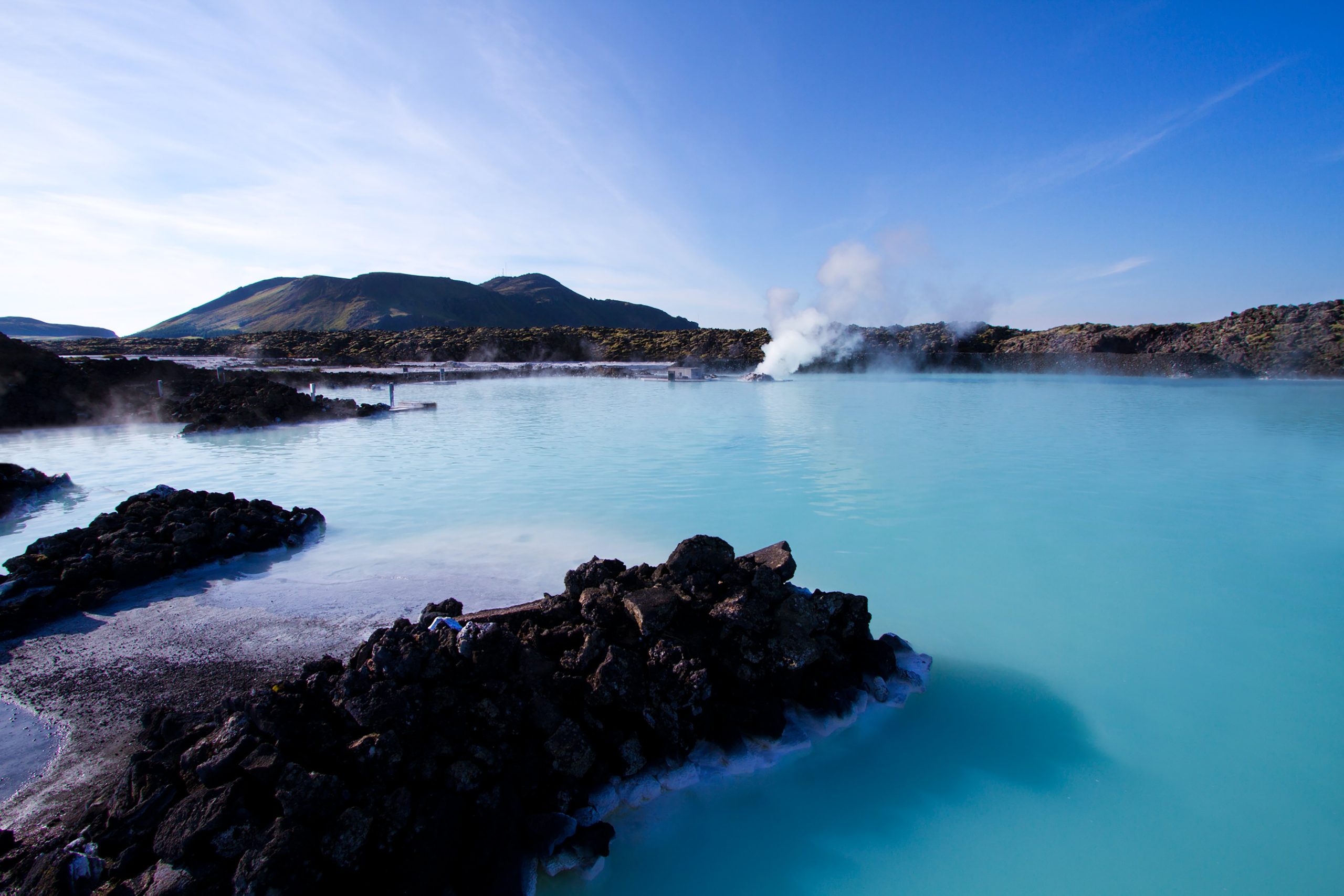On Sunday, we hopped a tour bus service called Inka Express that drove us nine hours along the countryside between Cusco and Puno. Along the way, we saw some ruins from other small Incan cities, chatted with three fellow travelers from Hong Kong and Australia over a buffet lunch, and toured around a small museum and Jesuit church.
We spent the evening relaxing over a nice dinner in Puno, then began our two-day journey around Lake Titicaca – the highest navigable lake in the world, and the largest lake in South America by volume.
Lake Titicaca means “Gray Puma” in Quechua, the old Incan language. The lake is 118 miles long and 50 miles wide. Sixty percent of the lake lies in Peru, while the remaining 40 percent rests in Bolivia.
Our first stop were the Uros, a group of manmade floating islands made of soil and reed. There are 60 total floating islands, with about five to eight families living on each. The “president” of the island we visited, Claudio, greeted us in a t-shirt, jeans and a New York Yankees baseball cap. He was a short, slightly overweight Quechua man with no front teeth. He, along with most others on the floating islands, walked along the reed grounds barefoot.
One local couple showed us their house, a one-room reed hut with one bed, a long reed bench covered with a blanket for comfort and, to my surprise, a six-inch television hanging in the corner with a cord running to a large battery on the floor. Due to the dangers of fire on reed, many families are also starting to buy small solar panels for their chilly homes – a costly service, but a much safer alternative to a fire. There was no electricity or running water anywhere on the Uros.
After a quick ride in the island´s community reed boat, we continued our journey another three hours to Amantani Island, where we spent the night with a local Quechua family. When we arrived, we lined up near the port with the 20 plus travelers in our tour group on one side and one member of each Quechua family on the other. Our tour guide, Angel, then paired us in groups of about four travelers per family. Angel paired Eric, me and two middle-aged French women with Munya, a short, middle-aged Quechua woman who then walked us about 10 minutes uphill to her house.
The house was much larger than I expected, but had limited amenities. Every room of the two-story home was built around a small, open courtyard in the house´s center. There were two bedrooms downstairs, along with the “Toilet” and the kitchen, and three bedrooms upstairs. Every door in the house was about five feet tall and, even after repeated warnings, I banged my head hard enough to give me a big bump and a pounding headache for a few hours after.
The bathroom had a sink, toilet and shower, but no shower curtain or running water. The only reason we had toilet paper was because Angel brought it for us. The family kept three large buckets of lake water outside the un-latchable wooden bathroom door at all times, so we could wash our faces and “flush” the toilet.
Eric, me and the french women stayed in two of the three bedrooms on the second floor. The rooms reminded me of freshmen year college dorm rooms. Our room had three twin(ish) sized beds, one small table, posters of Peruvian landscapes all over the walls and NFL sheets hanging as curtains in the two windows. The french women’s room looked similar with only two beds.
We ate three meals at the house: lunch, dinner and breakfast the second day. Due to its costly price, the locals eat little meat or fish on the island, which worked out perfectly for my vegetarian diet. For lunch we ate quinoa soup with a plate full of small potatoes and a slab of fried cheese. We ate potato soup for dinner with a plate of white rice and pasta (woah, carbs) and pancakes with sugar or jam for breakfast.
The kitchen was a small, square room with a dirt floor. There was a small table on one side of the room, where the visitors ate, and a cooking area on the opposite wall with wooden shelves full of clay dishes, a two-burner gas stove and two water buckets on the floor for cleaning the dishes. There was also a small room off the kitchen, which seemed to be the food preparation room. Since the families spoke only Quechua and Spanish, we had a hard time understanding the family structure. Regardless, Munya´s extended family lived close, and many of them gathered often in the extended kitchen room to sit around its long reed benches, peel potatoes and share coca tea over the small fire pit in one corner of the room.
After dinner, all our temporary house ¨mamas and papas¨ dressed us in the island community´s traditional clothing and took us to a fiesta. The men wore a large shawl-like blanket over their shoulders and a winter hat with the ear coverings on their heads. The women each wore two bright skirts, a white embroidered long-sleeved shirt, a large colorful belt and a black embroidered scarf around their shoulders or over their heads.
Four local boys made up the band, and each played a different instrument – a guitar, fiddle, pipes and a bass drum. The fiesta was held in a large room, and we all danced, breathless (at 4,000 kilometers high, as they kept reminding us) for an hour and a half. The dances begin with two people facing each other holding hands, then carries on almost the entire song by just moving each other´s arms back and forth, one at a time, in a way little kids sometimes do when dancing at American wedding receptions. To spice things up, Munya would spin us every once in a while, which made for an entertaining sight considering she was no more than five feet tall.
The Quechua family offered us a truly special cultural experience. And, the views from Amantani Island made the stay even more memorable. At dusk, Angel led our tour group on a hike to the island’s highest peak, where a temple called Pachamama sat at about 4,550 kilometers high. From there, we had the most beautiful view of Lake Titicaca, and many of its other islands both in Peru and Bolivia. The hike was steep and difficult with the high altitude, but the view made for one of the most beautiful sunsets I have ever seen.
We said our goodbyes the second day, and sailed an hour to Taquile Island. We went on another small, but challenging hike, ate lunch on a mountain top that overlooked the lake, then headed back to the boat for our three-hour ride back to Puno.
I will never forget the days we spent visiting the locals on Lake Titicaca. I’ve never had an experience like this before, and I enjoyed seeing the culture firsthand. I’m grateful for the simplicity in splashing lake water on my face to clean up in the morning, and walk a mile uphill on a dark, cold night to go to a party.
Though we exchanged few words, the Quechua families gave many smiles and welcomed us into their community and homes with kindness. They did all this with little money, no running water and only heavy blankets to keep warm at night.





No Comments